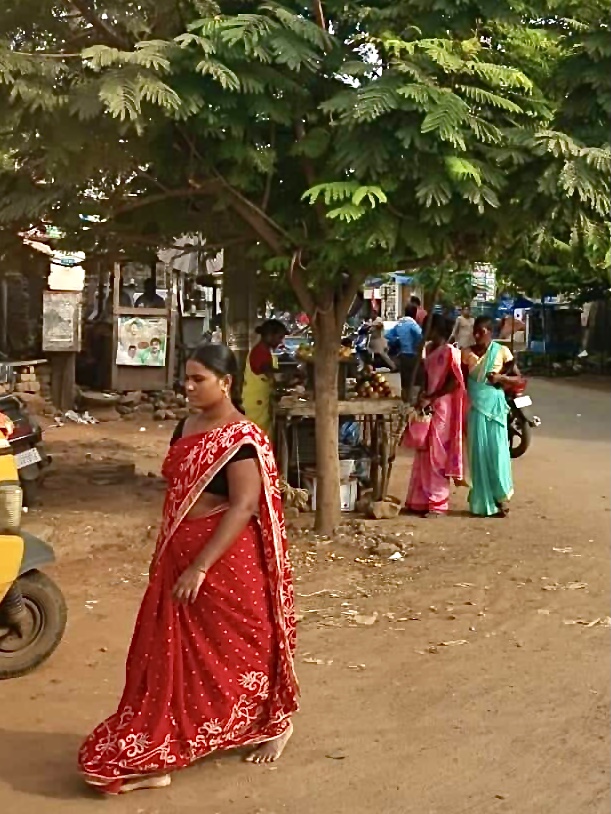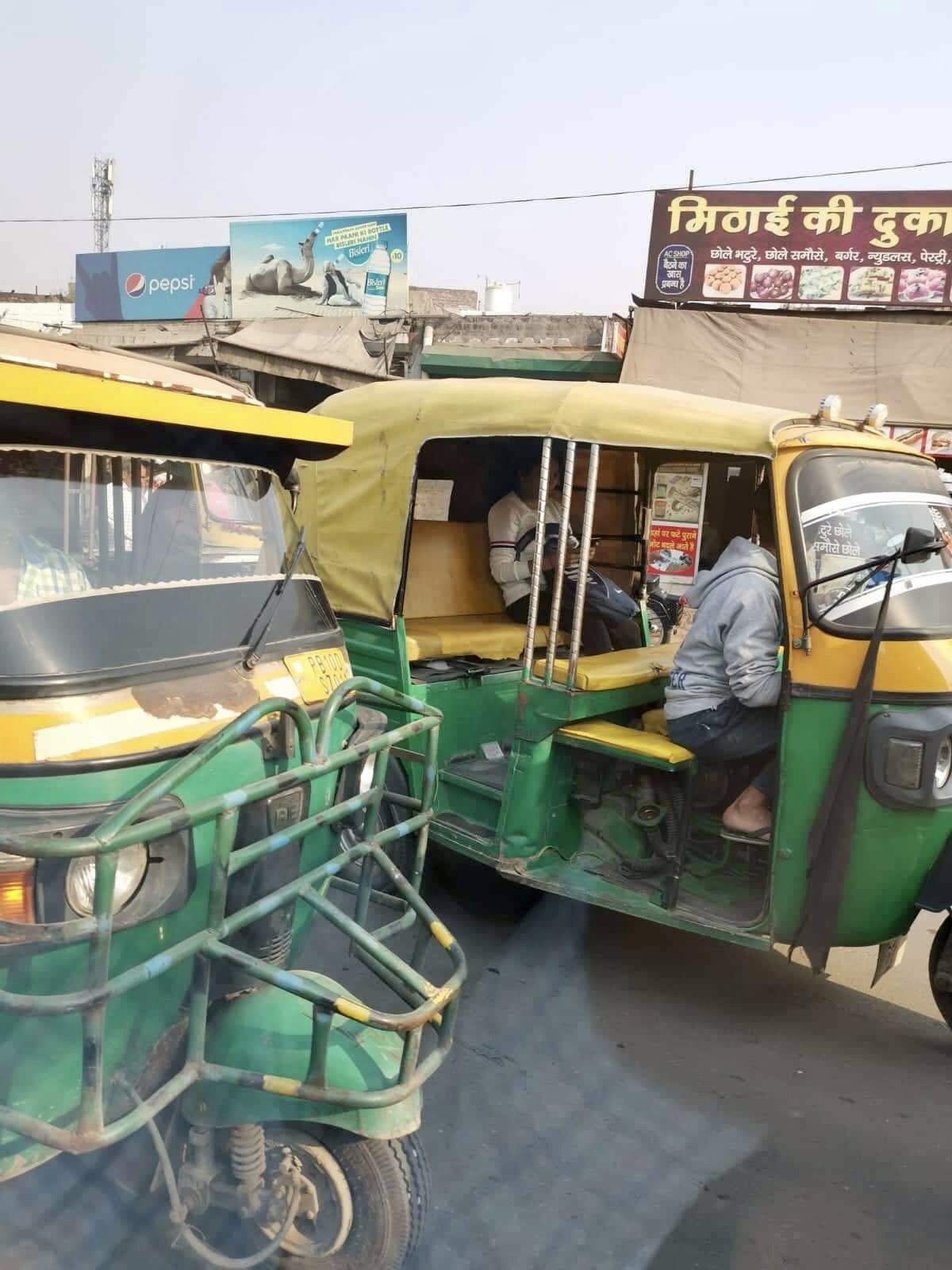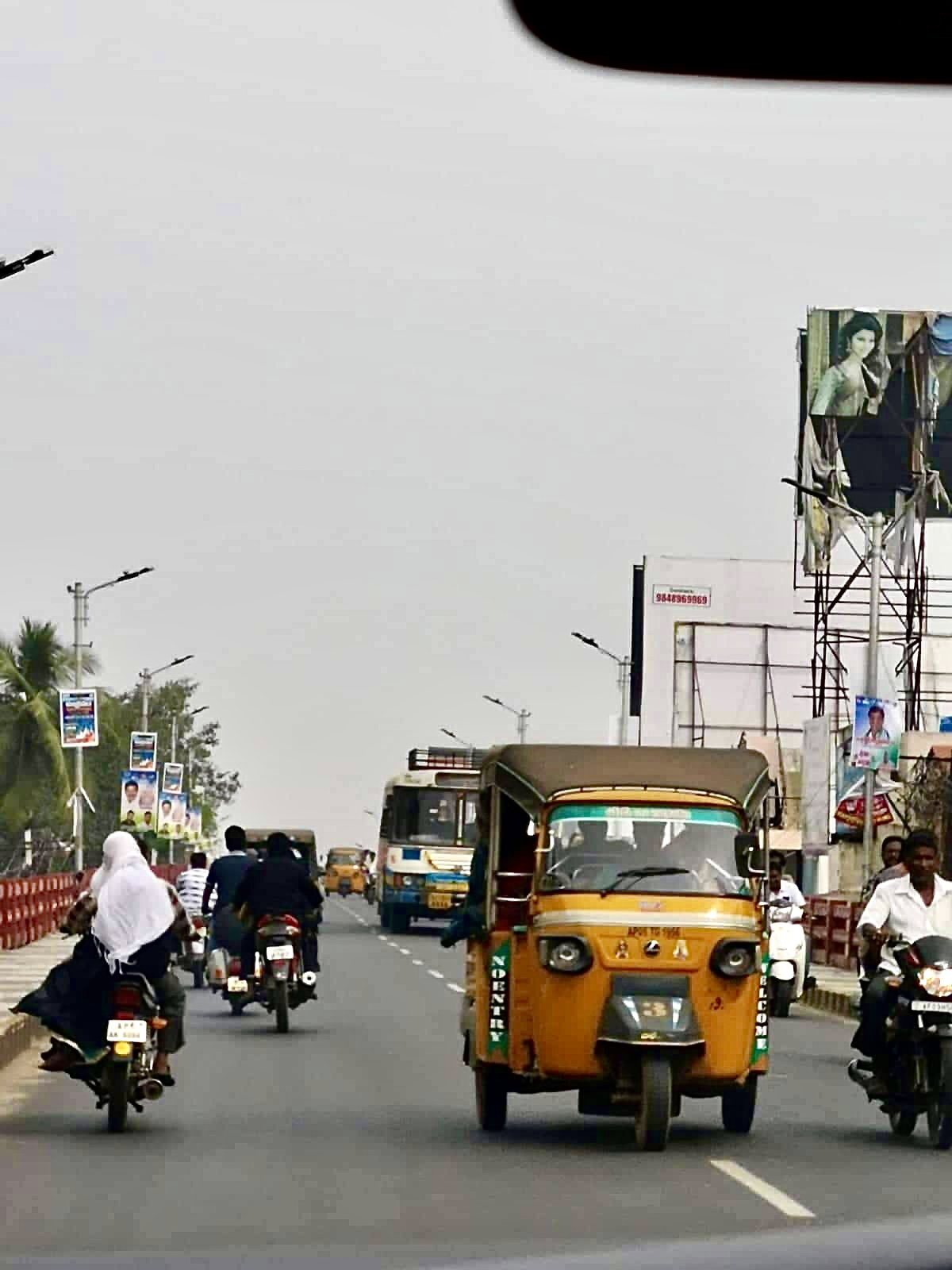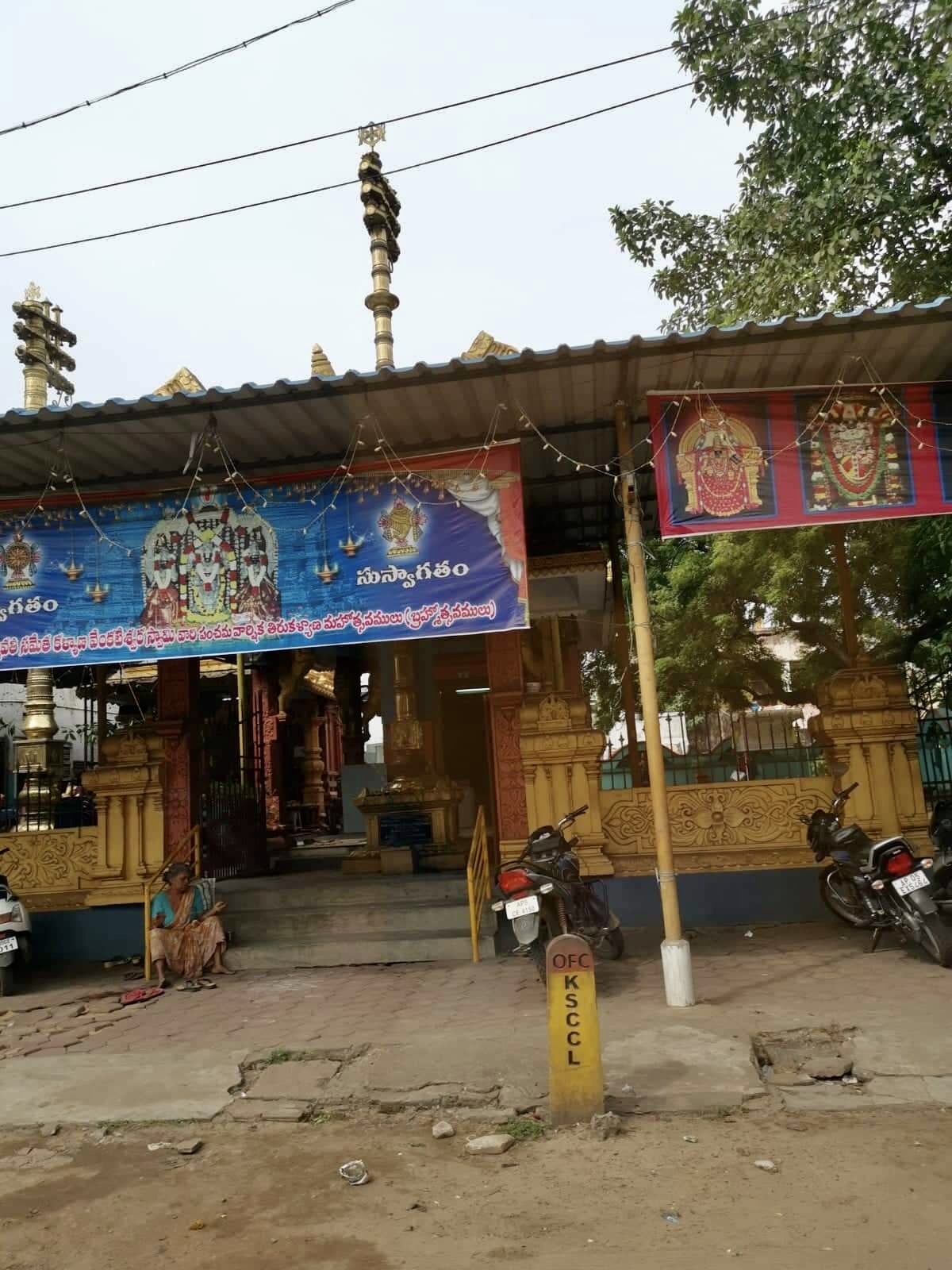India - straddled the subcontinent
Hello Folks!
Saturday, July 10, in the lunar calendar June 1, and last night the moon was new moon.
We are starting a new month in Asia.
Also today is the first anniversary of Radio Nowy Świat, which I am honored to patronize. All the best!
We haven't visited the Indian subcontinent for a long time ...
So I decided to share with you my observations from my trip to India.
Considering my experiences in Asia so far, it was also the most exotic journey.
You have already had the opportunity to read two articles from this trip. One concerned the train journey from Delhi to Ludhiana. In the second, I touched upon the topic of sacred cows. Feel free to read, if you haven't had the opportunity yet.
In this article, I would like to summarize a week-long trip with some general insights.
Just at the thought that the plan was to visit the north of India, in the state of Punjab in the foothills of the Himalayas, fly to the center, to Bangalore, then to Rajahmundry and drive to Kakinada in the south of the subcontinent, my heart started pumping blood faster.
All in all, for a week's stay, I actually managed to experience many interesting situations and see how you travel in India in the twenty-first century.
In short: I checked how the airport network in India works and functions, I had the opportunity to experience Indian rail travel. In addition, I spent over 5 hours traveling by car to the coast of the Indian Ocean. Eventually, I made a few walks in Ludhiana and Kakinady streets. You admit it's quite a lot.
This trip made me realize one common feature of Asian countries, which allows me to know where we are at the moment.
I am talking about a unique fragrance that can be recognized in a specific country.
The fact is that when traveling around Asia, you can recognize your whereabouts (if you go there quite often) by the smell of the air that you smell after leaving the plane. Although it comes with time and the number of trips made. Anyway, I can sense what country I ended up in.
In India, the smell of the air is very specific.
It's a mix of spices, turmeric and curry, flowers and smog. Generally, there is no objection to where you landed.
Interestingly, landing in Delhi, traveling to Ludhiana and then to Kakinada, it was very similar everywhere, with different intensity of these 3 factions.
No matter if I was in the north of India, near the Himalayas or in the south, on the coast of the Indian Ocean, this specific smell was noticeable to me and accompanied me throughout my stay in India.
In addition to the smell, I also experienced amazing views and interesting observations.
First things first.
A colorful world ...
Being in Ludhiana, Punjab, I met Indian Sikhs, for whom a characteristic element of clothing is a colorful, original turban-shaped pagri. The colors are very different and depend on the situation. Although white, for example, the symbol of peace, it is mainly worn by older Sikhs. Pink, the symbol of spring, is worn during this season, but also at weddings and receptions. Pagri is hand-wrapped from a 5-meter strip of fabric. Tradition has it that in order to honor your guest, you should give him one such turban. Nowadays, turbans are pre-wrapped and put on the head just like a hat. It makes an impression when you meet dozens of men on the street who wear turbans of almost all colors. Another commonly visible element of the local culture is the sari. Feminine outfits, in almost all, and very intense colors that women wrap themselves around. The contrast between the saris, turbans and the greyness of the streets is astonishing. It's like flowers in the desert. Visible from a distance, adding color to a boring space.
The streets of Indian cities captivated me primarily with their colors.
Ah, those drivers...
Walking through the streets of Ludhiana or Kakinada, I noticed a lot of bicycles and tricycles, mixed with cars, vans and huge trucks, which, decorated in an amazing way, with loud horns, made their way through congested intersections.
Unfortunately, the streets are qualitatively very different from those that can be found, for example, in China or Southeast Asia. Not to mention Japan. Holes, lack of markings and poor-quality surface make it impossible to talk about the comfort of driving a car in India. This also applies to motorway class roads ...
Whether there are any rules on the roads in India raises my doubts. There are definitely some road rules. As for their use and enforcement, it is probably not entirely okay. In any case, traffic was on a "first come, first served" basis. Without rhyme or reason. Whoever has the bigger car and the stronger one enjoys the right of priority. More than once, during my 5-hour journey from Rajahmundry airport to Kakinada, I got goosebumps.
The taxi company driver we hired was not very skillful. He weaved left to right, avoiding the potholes in the road. He was overtaking slower cars on the right. In places, maneuvers on the narrow road restricted herds of cows wandering along the side of the road. We went to a head-on collision several times, which we avoided at the last minute by going to the side of the road. Anyway, traveling by car around India is a huge challenge not only for us tourists, but also for local residents.
Airplanes...
Air transport is somewhat opposed to traveling by car, the quality of roads and the skills of drivers. My experience of flying between Ludhiana, Bangalore and Rajahmundry has been very positive.
Airports, even local ones, did not deviate from the standards in Indonesia, Viet Nam or the Philippines. Clean and efficient. Well-marked airport check-in counters and an efficient security control service made the flight check-in short and a positive experience. Let me just remind you - India has 1 billion 360 million inhabitants.
I was also surprised somehow by the planes on which I had the opportunity to fly. I used the local low cost airline "IndyGo". I was really surprised by the quality of the on-board service. Included in the price of the ticket, despite being a low-cost airline, was a full meal. The planes were new, clean, beautifully maintained and the flight attendants were extremely polite. Also the airport services - bus transfer from the departure hall, luggage service, everything was really well organized, quick and leaves good memories.
Babel Tower?
Another surprise came with an attempt to talk to the inhabitants of Kakinada I met. We had minor difficulties communicating in Hindi.
This is due to the fact that India does not have a national language. Hindi is considered the leading language and 74% of the population is said to have knowledge of this language. The supporting language is English, mainly used as the official language. As you can see, this did not guarantee us the opportunity to talk to local residents.
Moreover, there are 22 official languages in the Indian Constitution. This is just a challenge.
India is divided into 28 states and 8 united territories, each of which has a lot of autonomy. Almost each of these states has its own language and, moreover, its own alphabet. Hence, our guides, coming from New Delhi, had little trouble communicating with the people of the southern states of India.
Fortunately, it was the English language that helped us. Most of the people working in the travel service or having contact with business have a common knowledge of English at a level sufficient for everyday communication.
I found it as interesting as surprising that the people of India from different, quite distant states communicated using the English language.
Just such a postcolonial culture.
The second curiosity that makes everyday cooperation with India a bit more difficult, at least in my experience, is an unusual time zone.
Well, India is a time zone which is shifted in the interval of 0.5 hours in relation to other time zones.
So we have a 2.5-hour difference to CET or 2.5 hours to East Asian time. This means that when we have a full hour in the world, India is half of it. Apparently not much, and basically from an everyday point of view, when we simply set the alarm clock according to the time of the place, it is not a problem.
However, when it comes to arranging a calendar of meetings or when you want to contact someone from outside India, you have to take into account that we have a strange 0.5 hour "hole" here.
Sir, buy a brick...
The streets that I had the opportunity to drive or walk on are amazing.
These are dozens of small stalls, often made of bamboo poles,
shops and markets selling agricultural produce. These stalls have roofs usually covered with palm or banana leaves.
The buildings on the streets also aroused my curiosity. They looked inhabited.
However, from a technical point of view, they were not finished. I also saw metal reinforcements, brick posts, concrete elements of load-bearing structures that protruded above the level of the storey. Sometimes it was the second or even third floor. For me, such a building looked as if it was still under construction.
And it turns out that I was not much wrong. Well, the construction law in India is very interesting and all costs, taxes, etc. pay off when the construction is completed and the building is submitted for collection. Keeping the building as an object under construction allows residents to use it and save costs and taxes.
Interesting, to be honest.
Colors...
The colors of India charmed me.
The feast of colors of saris, turbans and beautiful buildings of Hindu temples are impressive.
Let's add to this young, smiling people with extremely lush hair who build their future based on good education and respect for tradition. If we combine this view with the majestically walking sacred cows, it can only be said that India is an amazing country.
A country of contrasts and an extremely rich culture. A country where class segregation still has its place. A huge subcontinent with the second, and soon perhaps the first, population in the world.
Sophisticated cuisine, the smells of exceptional spices and the color of the streets - all this makes me want to visit India once again. This time to be a little closer to local residents and talk about history and culture with people who live there on a daily basis.
I must say that the old British statement that India is the "pearl in the crown" of the British monarchy had its justification. At least in my eyes...
More new articles
Pages created with WebWave



















